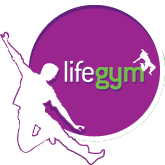The hidden sugar in our diet and how to combat consuming too much.…
We all know that too much sugar in the diet causes dental problems, obesity, diabetes, nutrient deficiencies and even premature ageing which is probably why, as we refrain from adding it to our tea and sprinkling it over our cereals, sales of packet sugars are the lowest they’ve been since 1975.
However, despite our best efforts to cut back, the amount we consume has actually increased to an average 6,753 teaspoons every year! That’s equal to 19 teaspoons a day – double the recommended amount. Why? Because over 75% of the sugar we consume is actually hidden within the commercially prepared foods that we buy. That’s why I’ve devised these five super, simple steps to help you seek them out and cut back once and for all.
Step one: Don’t be fooled by the term ‘no added sugar’ or ‘unsweetened’ claims on the packet
This only means that the manufacturers have not added sugar. It doesn’t necessarily mean that the product itself is low in sugar or that the manufacturers haven’t used concentrated high sugar fruit juices instead. The same goes for so called ‘healthier eating’ products’ as a recent report by ‘Which?’ magazine found many ‘healthy eating ranges’ to be much higher in sugar than the standard versions.
Step two: Look at the nutritional information
Sugar is one of the food industry’s favourite ingredients. It’s used to brown, preserve, thicken, aerate, stabilise, sweeten and bulk out our foods and is in everything from ‘health bars’, diet foods and yogurts through to breads, processed meats, baked beans, sauces, dressings, drinks, crisps and pizzas.
Checking the labels of these foods may be a little laborious at first but you’ll soon get a feel for the amounts of sugars hidden in your favourite products – and you are likely to get some surprises too! Look for the ‘Carbohydrates (of which sugars)’ figure in the nutrition information panel on the label: 10g sugars or more per 100g is a lot of sugar, 2g sugars or less per 100g is a small amount and anything between 2g and 10g per 100g is moderate.
Step three: Look at the ingredients list
Sometimes it is difficult to decipher how much sugar is in a food as the label may only give an amount for ‘Carbohydrates’, and not for ‘Carbohydrates (of which sugars)’ so take a look at the ingredients list instead. All sugars must be included here and the ingredients must always be listed in order of largest quantities first. Therefore if you see sugar (or any of the other names for sugar as listed below) itemised within the first few ingredients or itemised several times within the list as a whole you’ll know that the product is likely to be a high sugar food.
Sugar can be listed on food labels under various aliases. Here are the most common ones:
· Sucrose
· Fructose
· Glucose
· Dextrose
· Galactose
· Lactose
· Maltose
· Invert sugar
· Raw sugar
· Brown sugar
· Confectioner’s sugar
· Granulated sugar
· Corn syrup
· High-fructose corn syrup
· Honey
· Maple syrup
· Molasses
· Hydrolysed starch
Step four: Eat more whole foods and prepare more of your meals and snacks yourself
That way you’ll know exactly how much sugar is in the foods you are eating. Snack on fresh fruits instead of processed cereal or health food bars, throw together a two minute salad or stir fry instead of reaching for a ready meal and drink freshly squeezed juices, smoothies and water instead of soft or fizzy drinks.
Step five: Avoid cravings for sugary foods brought about by low blood sugars by eating little meals often throughout the day.
Aim to eat at least two low GI meals a day and snack on fresh fruit, nuts, seeds and wholegrain breads or crackers.




